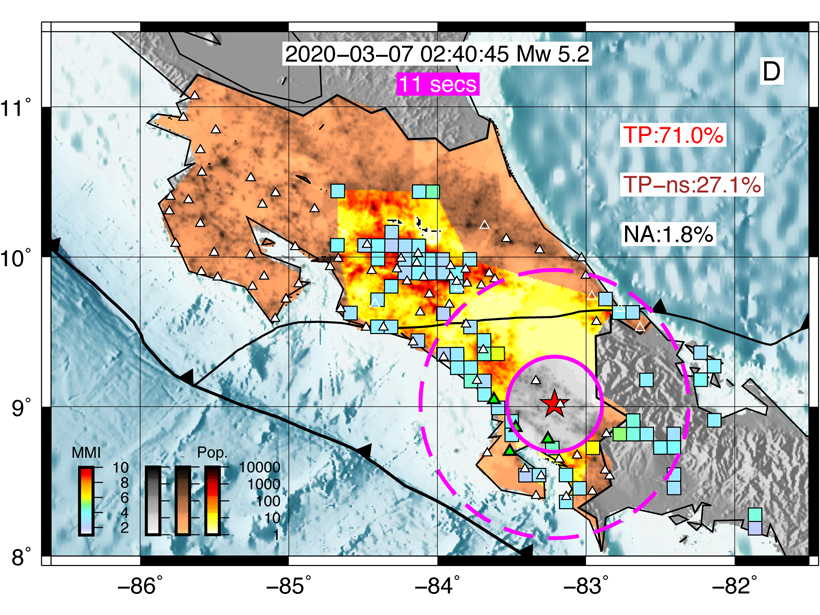Source: AGU Advances
Even short warning of earthquakes can be crucial in protecting lives and infrastructure, so there is great interest in developing systems for earthquake early warning. Any such system must be reliable and balance sensitivity for events against such factors as user tolerance for false alarms in which no shaking is felt. This is complicated by the need to have relatively dense sensor coverage not only where people reside but also in adjacent seismogenic regions. This requires high costs if typical scientific-grade instruments are used but such costs are prohibitive in many countries where resources are limited.
Brooks et al. [2021] describe very encouraging results from Costa Rica, where the ASTUTI network (Alerta Sismica Temprana Utilizando Teléfonos Inteligentes, or Earthquake Early Warning Utilizing Smartphones) uses a fixed network of smartphones. Their data indicate that such low-cost networks can be highly effective and installed and operated at relatively lower costs, bring the benefits of early warning to a broader portion of the world’s population.
Citation: Brooks, B., Protti, M., Ericksen, T. et al. [2021]. Robust Earthquake Early Warning at a Fraction of the Cost: ASTUTI Costa Rica. AGU Advances, 2, e2021AV000407. https://doi.org/10.1029/2021AV000407
—Peter Zeitler, Editor, AGU Advances
Text © 2021. The authors. CC BY-NC-ND 3.0
Except where otherwise noted, images are subject to copyright. Any reuse without express permission from the copyright owner is prohibited.

